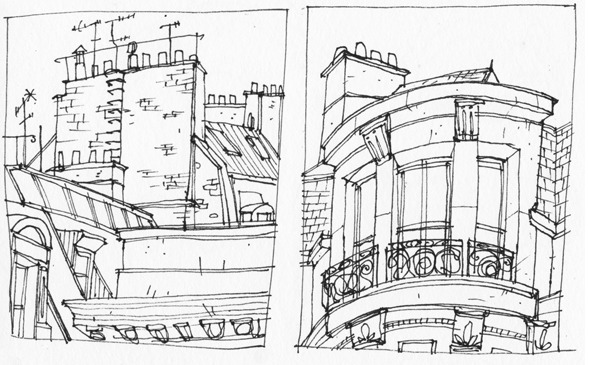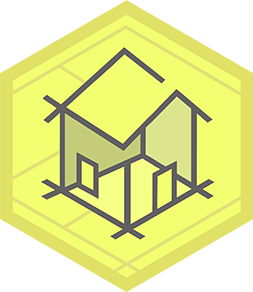Sketch a real building
Observe a real building and sketch its basic shapes, proportions, and details using pencil, ruler, and shading to practice drawing from life.


Step-by-step guide to sketch a real building
How to Draw a Simple Building using One-Point Perspective for Beginners
Step 1
Pick a nearby building you can draw from a safe place.
Step 2
Gather the materials listed above.
Step 3
Move to a safe spot where you can clearly see the whole building.
Step 4
Look carefully at the building and notice the biggest simple shapes like rectangles triangles and circles.
Step 5
Hold your pencil at arm's length and use it to compare the building’s height and width for proportions.
Step 6
Lightly sketch the main outline shapes on your paper with soft pencil strokes.
Step 7
Draw the basic placement of doors and windows as simple shapes inside your outline.
Step 8
Use your ruler to make straight edges for walls rooflines and other straight parts.
Step 9
Erase any guide lines that look wrong to make the sketch cleaner.
Step 10
Shade the areas where the building is darker to show light and shadow.
Step 11
Gently blend shaded areas with your finger or a blending stump to make smooth tones.
Step 12
Add small details like window panes bricks or plants to make the sketch look finished.
Step 13
Sign your name and write the date on your sketch.
Step 14
Share your finished sketch on DIY.org.
Final steps
You're almost there! Complete all the steps, bring your creation to life, post it, and conquer the challenge!


Help!?
What can we use if we don't have a blending stump or a ruler?
Use a clean fingertip or a folded tissue to blend shaded areas and a straight-edged paperback book or piece of cardboard in place of a ruler to make straight rooflines and walls.
My sketch looks out of proportion — how do I fix it?
Re-check proportions by holding your pencil at arm's length again to compare the building's height and width, lightly mark the key points on your paper, then erase and adjust the main outline shapes with soft pencil strokes until they match.
How can I change the activity for younger or older kids?
For younger children, simplify by tracing big rectangles and circles for the building and drawing only a few doors or windows, while older kids can use the pencil-at-arm's-length measuring trick to refine proportions, use a ruler for precise edges, and focus on shading, blending, and small details like bricks.
What are some ways to enhance or personalize the finished sketch?
Add color with colored pencils or a light watercolor wash over your shaded tones, include personalized details like plants or unique window panes, sign and date the sketch as instructed, and share a photo on DIY.org to show progress.
Watch videos on how to sketch a real building
How To Draw Buildings | Architecture Doodles For Beginners
Facts about observational drawing
☀️ Shadows change a building's look a lot—at noon shadows are shortest, while morning and late-afternoon light make long dramatic shadows.
✏️ Architects and designers often start with quick hand sketches to explore ideas before using computers.
🖼️ Simple shading techniques like hatching and cross-hatching can make flat pencil lines look like brick, stone, or glass.
📐 Two-point perspective uses two vanishing points on the horizon to draw buildings seen from a corner realistically.
🏛️ Vitruvius, a Roman architect from the 1st century BC, wrote about proportion and symmetry that influenced building design for centuries.
How do I sketch a real building from life?
What materials do I need to sketch a building outside?
What ages is building sketching suitable for?
What are the benefits of sketching real buildings?


One subscription, many ways to play and learn.
Only $6.99 after trial. No credit card required



